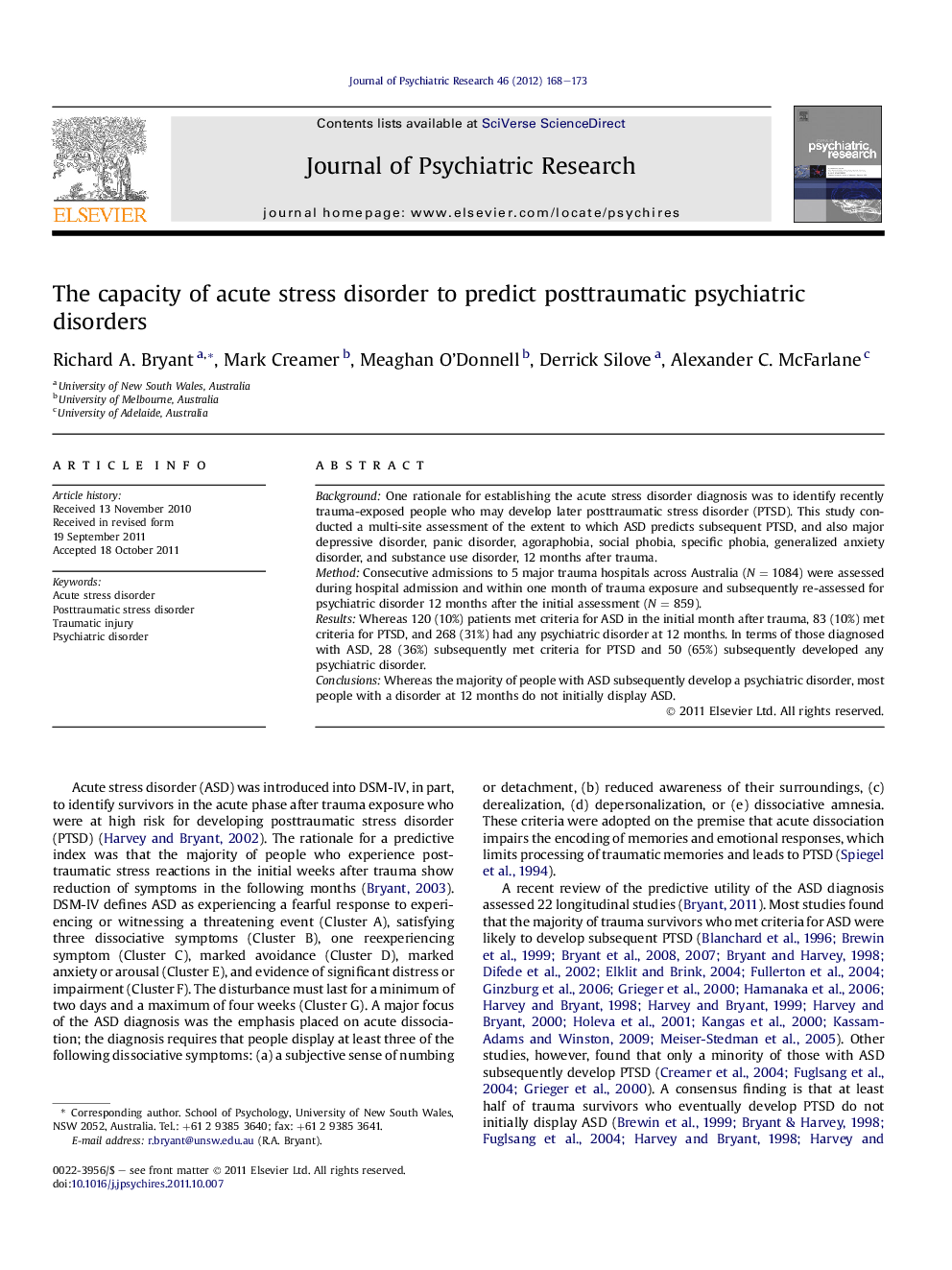| Article ID | Journal | Published Year | Pages | File Type |
|---|---|---|---|---|
| 327717 | Journal of Psychiatric Research | 2012 | 6 Pages |
BackgroundOne rationale for establishing the acute stress disorder diagnosis was to identify recently trauma-exposed people who may develop later posttraumatic stress disorder (PTSD). This study conducted a multi-site assessment of the extent to which ASD predicts subsequent PTSD, and also major depressive disorder, panic disorder, agoraphobia, social phobia, specific phobia, generalized anxiety disorder, and substance use disorder, 12 months after trauma.MethodConsecutive admissions to 5 major trauma hospitals across Australia (N = 1084) were assessed during hospital admission and within one month of trauma exposure and subsequently re-assessed for psychiatric disorder 12 months after the initial assessment (N = 859).ResultsWhereas 120 (10%) patients met criteria for ASD in the initial month after trauma, 83 (10%) met criteria for PTSD, and 268 (31%) had any psychiatric disorder at 12 months. In terms of those diagnosed with ASD, 28 (36%) subsequently met criteria for PTSD and 50 (65%) subsequently developed any psychiatric disorder.ConclusionsWhereas the majority of people with ASD subsequently develop a psychiatric disorder, most people with a disorder at 12 months do not initially display ASD.
